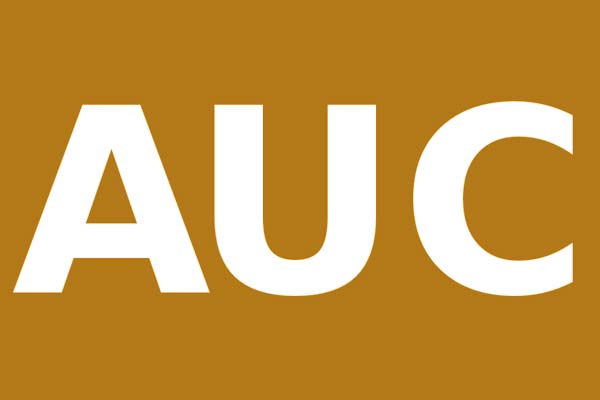American Diploma: Mastering Grades, Credits, and Beyond
The American Diploma is a high school diploma awarded to students who have completed a high school diploma program in the United States. This certificate indicates that the student has fulfilled the graduation prerequisites at a U.S. high school.
The American Diploma is recognized by universities and colleges in the United States and worldwide. It is a valuable credential that opens up many opportunities for students who wish to pursue higher education or enter the workforce.
The requirements for obtaining an American Diploma vary from state to state and school. However, there are some general requirements that most high schools in the U.S. follow.
Students are generally required to satisfy specific credit criteria in subjects including English, math, science, social studies, and electives. Furthermore, they might be anticipated to attain satisfactory scores on standardized assessments like the SAT or ACT.
There are different types of American Diplomas, depending on the student’s achievement level. The most common type is the general diploma, awarded to students who have completed the standard graduation requirements.
However, there are also honors and advanced diplomas, which require additional coursework and higher grades.
Academic Structure of the American Diploma
The American Diploma is awarded to students who complete their high school education in the United States. The academic structure of the American Diploma is designed to provide students with a well-rounded education in core subjects and electives.
Core Subjects
The American Diploma requires students to complete a set of core subjects that are essential to their academic development. These subjects include:
- English Language Arts
- Mathematics
- Science
- Social Studies
The curriculum for English Language Arts emphasizes reading, writing, and critical thinking. Mathematics classes encompass algebra, geometry, and calculus. Science studies comprise biology, chemistry, and physics. Social Studies courses delve into history, geography, and government.
Electives
Students must also undertake a series of elective courses besides the core subjects. These electives enable students to delve into their interests and cultivate expertise in various areas, including:
- Physical Education/Health Education
- Arts Education/Practical and Applied Arts
- Humanities
- Language Acquisition
The Physical Education/Health Education curriculum focuses on developing physical fitness and healthy living habits. The Arts Education/Practical and Applied Arts curriculum covers music, drama, and visual arts.
🌟 Hey Students! 🚀 Ready for the ultimate experience? Join us on Studentsinside.com's Facebook, YouTube, WhatsApp, and LinkedIn. Click now for tips, fun, and success vibes! 🌈✨ #StudentLife #JoinUs
The Humanities curriculum covers literature, philosophy, and cultural studies. The Language Acquisition curriculum focuses on developing proficiency in a foreign language.
Grading System
The American grading system evaluates assignments, tests, and exams by calculating the percentage of correct answers. It employs a letter-based scale from A to F, where A signifies the top grade and F indicates failure. Additionally, some institutions utilize a plus (+) and minus (-) system to provide more granularity in grading.
In American high schools, students typically start receiving grades in grade 7. However, these grades are usually included on transcripts in grade 9. From grade 9 to grade 12, students receive grades for each class they take, which are then averaged to calculate their overall GPA (Grade Point Average).
Below is a table illustrating letter grades and their respective GPA equivalents:
| Letter Grade | GPA Value |
|---|---|
| A | 4.0 |
| A- | 3.7 |
| B+ | 3.3 |
| B | 3.0 |
| B- | 2.7 |
| C+ | 2.3 |
| C | 2.0 |
| C- | 1.7 |
| D+ | 1.3 |
| D | 1.0 |
| F | 0.0 |
The GPA is essential in determining a student’s college admission and scholarship eligibility. A high GPA indicates solid academic performance and can increase a student’s chances of acceptance into competitive programs.
It is worth noting that the grading system can vary slightly from school to school and state to state. Some schools may weight certain classes, such as honors or Advanced Placement (A.P.), which can result in a higher GPA.
Furthermore, certain educational institutions might adopt an alternative grading system, like a 10-point scale instead of the standard 4-point scale.
Transition from Elementary to Middle and High School
The transition from elementary to middle and high school is a significant milestone for students in the American education system.
It marks a significant shift in the academic, social, and emotional demands placed on students, which can be exciting and overwhelming.
Middle school is typically the bridge between elementary and high school. It is a time when students begin to take on more responsibility and independence in their learning. They are introduced to various subjects, including science, history, and foreign languages.
Middle school students are anticipated to efficiently handle their time, prioritize assignments, and cultivate study skills for future success in high school.
High school is the final stage of compulsory education in the United States, and it is a critical time for students as they prepare for college or the workforce.
High school students are anticipated to enroll in demanding courses like advanced math and science, alongside engaging in extracurriculars that foster leadership and interest exploration.
To help students navigate this transition, many schools offer orientation programs, counseling services, and mentorship programs.
These resources can help students adjust to the new academic demands and social dynamics of middle and high school and provide them with the support they need to succeed.
College and University Admission with American Diploma
American high school diplomas are widely recognized and accepted by colleges and universities in the United States. Students with an American diploma have a good chance of being admitted to higher education institutions in the country.
Students must fulfill particular criteria to apply for college or university admission. These criteria can differ based on the institution, but generally, colleges and universities assess the following aspects:
- High school grades: Colleges and universities look closely at high school grades to determine admission. A high GPA reliably predicts a student’s academic aptitude and potential for higher education success.
- Standardized test scores: Most colleges and universities mandate students to complete standardized tests like the SAT or ACT, which assess a student’s preparedness for college-level studies.
- English proficiency: Non-native English-speaking international students might be required to undergo an English proficiency assessment like TOEFL or IELTS.
- Application essays: Many educational institutions mandate the submission of essays alongside applications. These essays serve as a platform for students to display their writing prowess and elucidate their suitability for the institution.
- Extracurricular activities: Higher education institutions evaluate students’ extracurricular engagements, including sports, clubs, and volunteerism. These involvements showcase a student’s leadership, creativity, and dedication to community service.
American high school diplomas can help students meet some of these requirements. For example, a high GPA can demonstrate a student’s academic ability, while standardized test scores can measure a student’s readiness for college-level work.
Additionally, many American high schools offer Advanced Placement (A.P.) courses, which can give students college-level experience and help them prepare for the rigors of higher education.
American Diploma for International Students
International students who wish to obtain an American high school diploma have several options.
These options include attending a school outside the U.S. or U.S. territories, enrolling in online courses, or attending an international high school program in the U.S.
One popular option for international students is to enroll in an international high school program in the U.S. E.F. Academy, for example, offers an American high school diploma program for students aged 14-19.
This program fosters student-centered classes by teaching an inquiry-based curriculum where students can develop their language acquisition skills in English, Mandarin, Spanish, French, and other languages.
Another option for international students is to enroll in online courses for high school and graduate in the comfort of their home country. This option allows students to earn an American high school diploma without traveling to the U.S. or attending a physical school.
Before acceptance as international students in U.S. high schools or colleges, individuals must furnish evidence of a secondary school leaving credential or equivalent.
Mesa Community College exemplifies this by mandating that prospective F-1 students attain the required academic standards in their home countries before gaining admission.
Innovation and Change in American Diploma
The American Diploma Course Academy aims to improve society’s cultural and scientific level by offering vocational courses that benefit the community.
The academy pays particular attention to innovation courses, which help students develop skills to succeed in a rapidly changing world.
Innovation and change are integral to the American high school diploma, which adheres to a flexible curriculum with many subject choices.
This qualification provides access to universities across North America and holds global recognition from international educational institutions.
Innovation and entrepreneurship are also critical components of the American high school diploma. The Innovation and Entrepreneurship Program at Stanford Online teaches students a radically different way of thinking that will power their inner drive to impact and make a real difference in their company.
The American high school diploma enables students to cultivate vital 21st-century skills: critical thinking, problem-solving, communication, and collaboration.
The diploma also allows students to develop technical skills in computer science, engineering, and mathematics.
Policies and Laws Governing the American Diploma
The American diploma is governed by policies and laws that ensure the validity and authenticity of the degrees granted by educational institutions. These policies and laws are in place to prevent diploma mills’ proliferation and protect the interests of students and employers.
One of the primary policies governing the American diploma is the accreditation process. Accreditation is a voluntary process that educational institutions undergo to demonstrate that they meet specific standards of quality and academic rigor.
Accreditation is granted by independent accrediting agencies recognized by the United States Department of Education.
In addition to accreditation, several laws regulate the American diploma. For example, the Higher Education Act of 1965 requires that higher education institutions be accredited to be eligible for federal financial aid.
This law also establishes the National Advisory Committee on Institutional Quality and Integrity, which advises the Secretary of Education on accreditation and institutional quality matters.
Another law that governs the American diploma is the Truth in Lending Act. This law requires educational institutions to provide students with detailed information about the cost of attendance, the amount of financial aid available, and the terms and conditions of any loans offered.
Finally, the United States Department of Education has established several regulations that govern the American diploma. These regulations cover many topics, including student privacy, financial aid disbursement, and institutional reporting requirements.
Understanding the ACT and SAT
The ACT and SAT are standardized tests U.S. high school students take for college applications. These tests evaluate college readiness and are commonly employed by universities in their admissions procedures.
ACT
The ACT is a multiple-choice exam comprising four main sections: English, math, reading, and science, with an optional writing section. Scores range from 1 to 36, with an average of approximately 20.8.
The ACTs a student’s knowledge and skills in grammar, algebra, geometry, reading comprehension, and scientific reasoning. The test is typically taken during the junior or senior year of high school, and scores are sent directly to colleges and universities to which the student has applied.
SAT
The SAT is also a multiple-choice test that consists of two sections: Evidence-Based Reading and Writing and Math. It also includes an optional essay section. The test is scored on a scale of 400-1600, with the average score being around 1050.
The SATs a student’s knowledge and skills in reading comprehension, grammar, algebra, geometry, and data analysis. The test is typically taken during the junior or senior year of high school, and scores are sent directly to colleges and universities to which the student has applied.
Differences between ACT and SAT
While both tests are designed to assess a student’s readiness for college, there are some differences between the two.
One of the main differences is the content of the tests.
The ACT includes a science section, while the SAT does not. The SAT, on the other hand, includes more advanced math concepts, such as trigonometry.
Another contrast lies in the scoring process of the tests. The ACT’s scoring relies on the count of accurate responses, whereas the SAT imposes a deduction for wrong answers.
Consequently, on the SAT, students should only guess when they can eliminate at least one incorrect option.
Role of Organizations in American Diploma
Several organizations have played a crucial role in developing and implementing the American Diploma Project (ADP). The ADP is a partnership of Achieve, Inc., The Education Trust, and the Thomas B. Fordham Foundation, and it has partnered with Indiana, Kentucky, Massachusetts, Nevada, and Texas. The project involved various K-12, higher education, and business representatives.
2005 Achieve introduced the ADP Network to emphasize college and career readiness across states. Originally encompassing a few states, the network expanded to cover 35 states, educating 85 percent of U.S. public school students.
This initiative united governors, state education officials, and business leaders to establish robust standards, ensuring students’ 21st-century success.
The National Governors Association (NGA) has also played a significant role in promoting the ADP. In 2008, the NGA Center for Best Practices released a report entitled “Benchmarking for Success: Ensuring U.S. Students Receive a World-Class Education,” which called for developing common standards to prepare students for college and careers.
The report catalyzed the development of the Common Core State Standards, now used in over 40 states.
The ADP’s development and execution have also benefitted significantly from the involvement of the Council of Chief State School Officers (CCSSO).
This nonpartisan, nationwide organization comprises public officials leading education departments in states, the District of Columbia, the Department of Defense Education Activity, and five additional U.S. jurisdictions.
The CCSSO helped to develop the Common Core State Standards and has worked closely with the ADP Network to promote college and career readiness.
Organizations such as the American Federation of Teachers (AFT), the National Education Association (NEA), and the Business Roundtable have also been involved in developing and implementing the ADP.
The AFT and NEA are two of the largest teachers’ unions in the United States, and they have worked with the ADP to help teachers implement the new standards.
The Business Roundtable is a group of CEOs from some of the largest companies in the United States, and they have been involved in the ADP to help ensure that students are prepared for the workforce.
American Diploma FAQs
Parents and students considering pursuing an American Diploma may have questions about the program. Here are some frequently asked questions about the American Diploma:
What is an American Diploma?
An American Diploma is a high school diploma awarded to students who complete specific requirements. The requirements for an American Diploma may vary depending on the state or school district but typically include a certain number of credits in core subjects like English, math, science, and social studies.
How do I earn an American Diploma?
To earn an American Diploma, students typically need to complete a certain number of credits in core subjects and elective courses.
The specific requirements for earning an American Diploma may vary depending on the state or school district. Students may also need to pass particular exams or meet other requirements to earn an American Diploma.
Is an American Diploma the same as a GED?
No, an American Diploma is not the same as a GED. A GED signifies a high school equivalency achieved through a standardized test, while an American Diploma is granted upon fulfilling specific high school requirements.
Can I earn an American Diploma online?
Yes, it is possible to earn an American Diploma online. Many accredited online high schools offer American Diploma programs. However, ensuring that the online school is accredited and that the American Diploma program meets the requirements of the state or school district where the student resides is crucial.
Can I transfer credits to an American Diploma program?
In some cases, transferring credits to an American Diploma program may be possible. However, the specific requirements for transferring credits may vary depending on the state or school district.
Students interested in transferring credits should contact the American Diploma program they are interested in attending for more information.
How long does it take to earn an American Diploma?
The amount of time it takes to earn an American Diploma may vary depending on the student’s circumstances. Some students may be able to earn an American Diploma in four years, while others may take longer. The specific requirements for earning an American Diploma may also impact the time it takes to complete the program.
American Diplomacy and Foreign Policy
American diplomacy and foreign policy have been shaped by various factors, including the country’s history, culture, and values. The United States has a long tradition of engaging with the world through diplomatic channels to promote its interests and values.
Diplomacy is a critical tool in the country’s foreign policy toolkit, and it is used to advance U.S. interests, build alliances, and promote democracy and human rights worldwide.
The U.S. Foreign Service is critical to American diplomacy and foreign policy. Foreign Service officers are career diplomats working at U.S. embassies and consulates worldwide. They represent the United States and advance its interests in their respective countries.
On the other hand, political appointees are individuals the President appoints to serve in various diplomatic roles. They are typically chosen for their expertise in a particular field or their political connections.
U.S. embassies and consulates are the primary platforms for American diplomacy and foreign policy. They serve as the face of the United States in their respective countries and provide services to American citizens and foreign nationals. These services include issuing visas, promoting U.S. business interests, and providing consular assistance to Americans abroad.
In recent years, the United States has faced several foreign policy challenges, including the rise of authoritarianism, terrorism, and the proliferation of weapons of mass destruction.
American diplomacy has been critical in addressing these challenges, building alliances and partnerships with other countries to promote stability and security worldwide.








